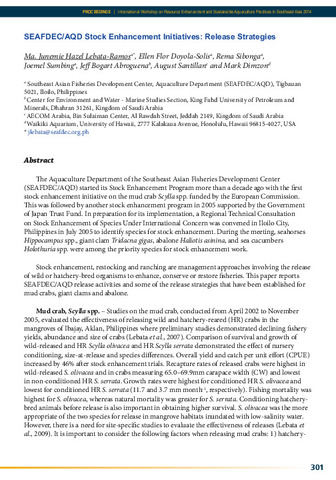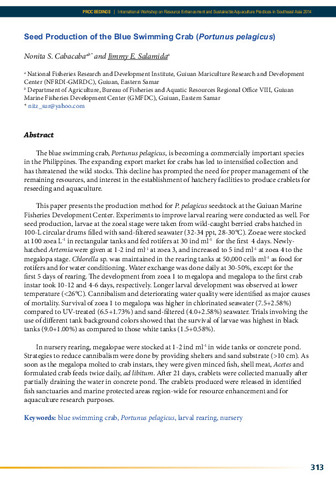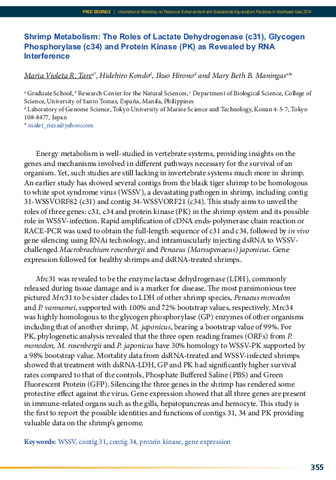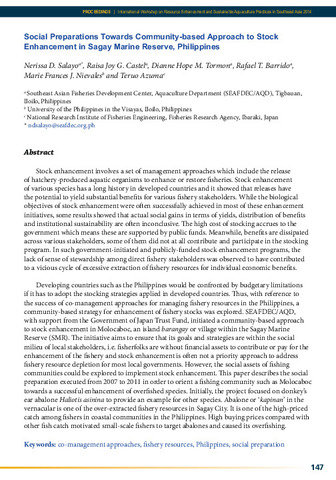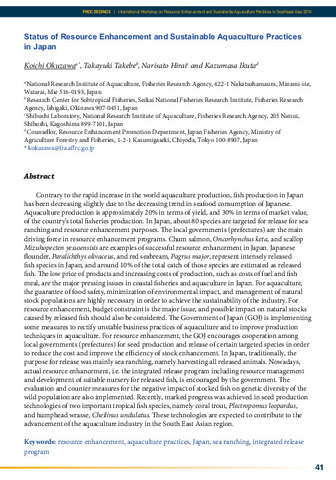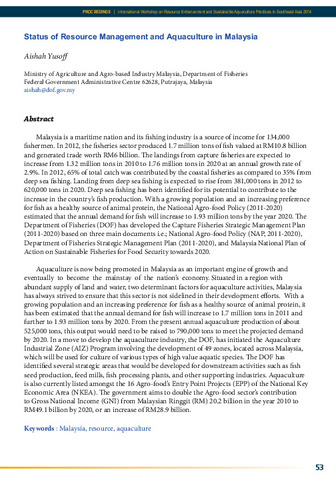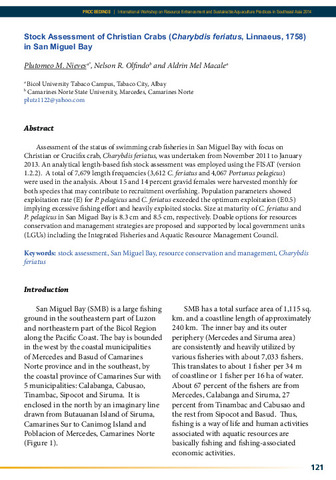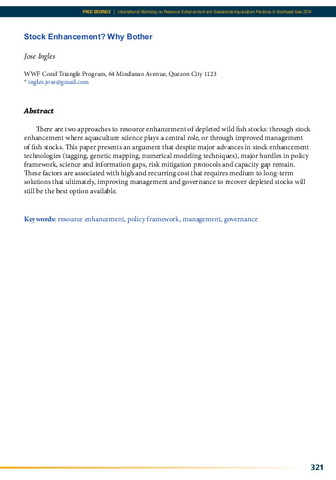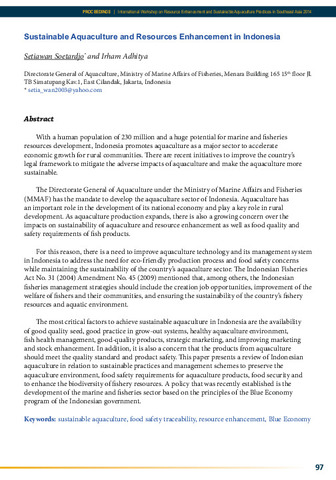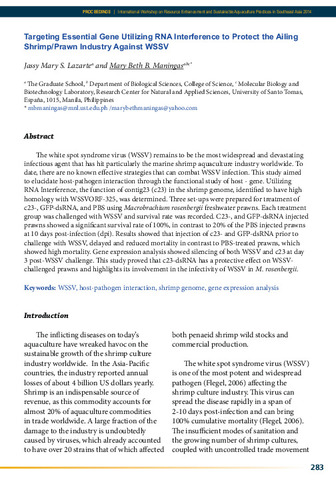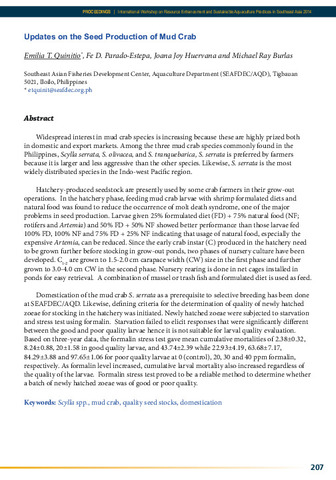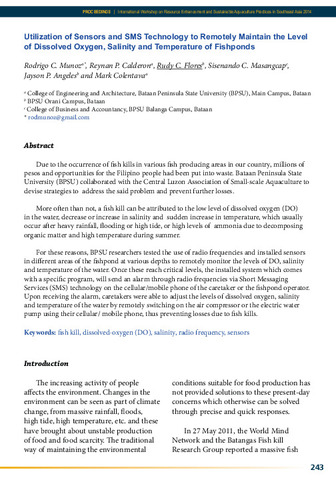Browsing Proceedings of the International Workshop on Resource Enhancement and Sustainable Aquaculture Practices in Southeast Asia 2014 (RESA) by Title
Now showing items 45-56 of 56
-
SEAFDEC/AQD stock enhancement initiatives: release strategies
(Aquaculture Department, Southeast Asian Fisheries Development Center, 2015)The Aquaculture Department of the Southeast Asian Fisheries Development Center (SEAFDEC/AQD) started its Stock Enhancement Program more than a decade ago with the first stock enhancement initiative on the mud crab Scylla ... -
Seed production of the blue swimming crab (Portunus pelagicus)
(Aquaculture Department, Southeast Asian Fisheries Development Center, 2015)The blue swimming crab, Portunus pelagicus, is becoming a commercially important species in the Philippines. The expanding export market for crabs has led to intensified collection and has threatened the wild stocks. This ... -
Shrimp metabolism: The roles of lactate dehydrogenase (c31), glycogen phosphorylase (c34) and protein kinase (PK) as revealed by RNA interference
(Aquaculture Department, Southeast Asian Fisheries Development Center, 2015)Energy metabolism is well-studied in vertebrate systems, providing insights on the genes and mechanisms involved in different pathways necessary for the survival of an organism. Yet, such studies are still lacking in ... -
Social preparations towards community-based approach to stock enhancement in Sagay Marine Reserve, Philippines
(Aquaculture Department, Southeast Asian Fisheries Development Center, 2015)Stock enhancement involves a set of management approaches which include the release of hatchery-produced aquatic organisms to enhance or restore fisheries. Stock enhancement of various species has a long history in developed ... -
Status of resource enhancement and sustainable aquaculture practices in Japan
(Aquaculture Department, Southeast Asian Fisheries Development Center, 2015)Contrary to the rapid increase in the world aquaculture production, fish production in Japan has been decreasing slightly due to the decreasing trend in seafood consumption of Japanese. Aquaculture production is approximately ... -
Status of resource management and aquaculture in Malaysia
(Aquaculture Department, Southeast Asian Fisheries Development Center, 2015)Malaysia is a maritime nation and its fishing industry is a source of income for 134,000 fishermen. In 2012, the fisheries sector produced 1.7 million tons of fish valued at RM10.8 billion and generated trade worth RM6 ... -
Stock assessment of christian crabs (Charybdis feriatus, Linnaeus, 1758) in San Miguel bay
(Aquaculture Department, Southeast Asian Fisheries Development Center, 2015)Assessment of the status of swimming crab fisheries in San Miguel Bay with focus on Christian or Crucifix crab, Charybdis feriatus, was undertaken from November 2011 to January 2013. An analytical length-based fish stock ... -
Stock enhancement? Why bother
(Aquaculture Department, Southeast Asian Fisheries Development Center, 2015)There are two approaches to resource enhancement of depleted wild fish stocks: through stock enhancement where aquaculture science plays a central role, or through improved management of fish stocks. This paper presents ... -
Sustainable aquaculture and resources enhancement in Indonesia
(Aquaculture Department, Southeast Asian Fisheries Development Center, 2015)With a human population of 230 million and a huge potential for marine and fisheries resources development, Indonesia promotes aquaculture as a major sector to accelerate economic growth for rural communities. There are ... -
Targeting essential gene utilizing RNA interference to protect the ailing shrimp/prawn industry against WSSV
(Aquaculture Department, Southeast Asian Fisheries Development Center, 2015)The white spot syndrome virus (WSSV) remains to be the most widespread and devastating infectious agent that has hit particularly the marine shrimp aquaculture industry worldwide. To date, there are no known effective ... -
Updates on the seed production of mud crab
(Aquaculture Department, Southeast Asian Fisheries Development Center, 2015)Widespread interest in mud crab species is increasing because these are highly prized both in domestic and export markets. Among the three mud crab species commonly found in the Philippines, Scylla serrata, S. olivacea, ... -
Utilization of sensors and SMS technology to remotely maintain the level of dissolved oxygen, salinity and temperature of fishponds
(Aquaculture Department, Southeast Asian Fisheries Development Center, 2015)Due to the occurrence of fish kills in various fish producing areas in our country, millions of pesos and opportunities for the Filipino people had been put into waste. Bataan Peninsula State University (BPSU) collaborated ...

